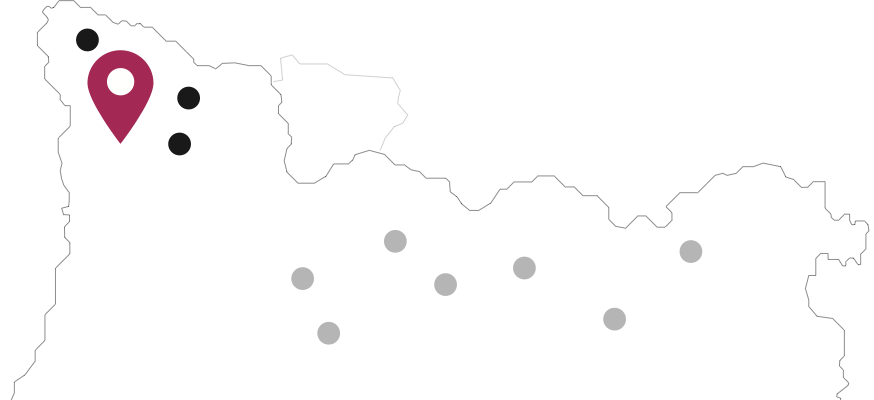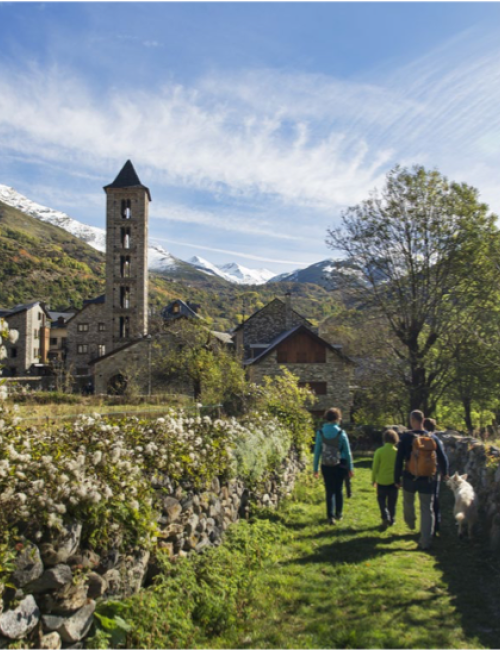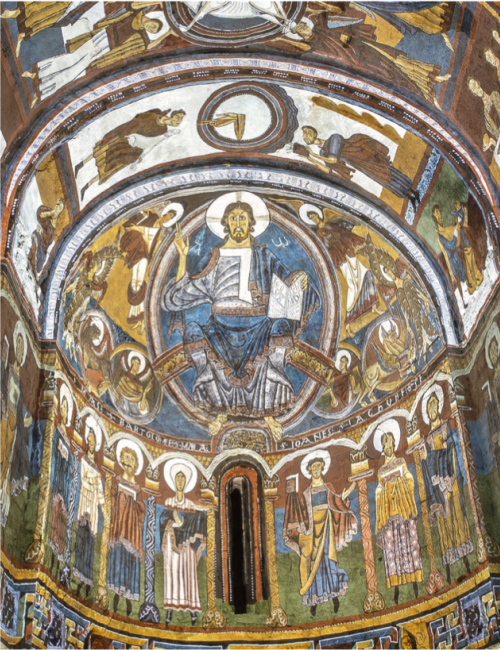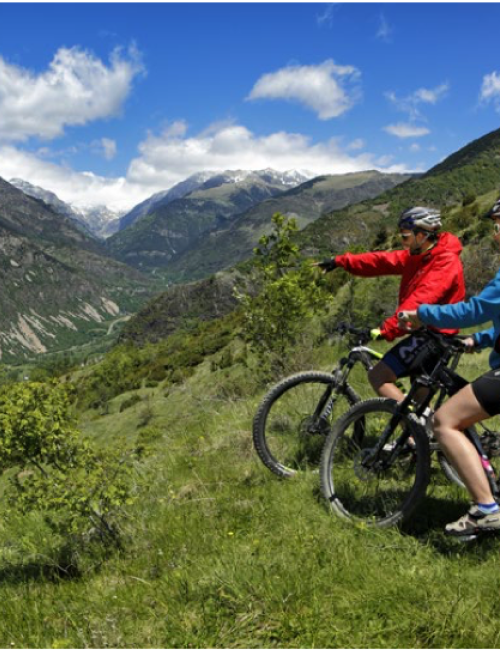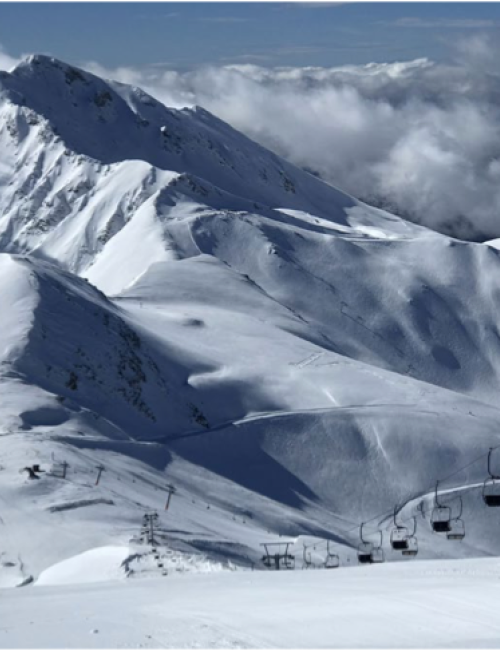Considered its capital, Taü̈ll is the valley’s highest town and the closest to the ski slopes, which is why there is always a lot of atmosphere. Even so, it has conserved the beauty of its two Romanesque churches, stone streets and medieval air, which has earned it the “Town with Charm” seal from the Catalan Tourism Agency.
Nestled in the northeast zone of Alta Ribagorça and with summits reaching 3,000 metres, the valley is the gateway to Aigüestortes i Estany de Sant Maurici National Park. It may not be a very large territory, but it is filled with attractions. It has a unique Romanesque ensemble of eight churches and a hermitage, ancestral traditions, a night sky with the Starlight Destination seal and lovely landscapes distinguished by their numerous lakes of glacial origin. Whether in winter or the rest of the year, a universe for enjoying nature and culture.
The route to Llong Lake is one of the top plans of the most family-friendly hiking. It is because, while an easy hike, it awards its walkers with landscapes which represent the synthesis of the beauty of the rest of the valley. You’ll have 4.2 kilometres to enjoy crystalline waters, lush vegetation and the company of cows who pasture far away from everything.
Right in the heart of the Catalan Pyrenees, the spa resort of Caldes de Boí is the one with the highest concentration of thermal waters in the world. At an altitude of 1,500 metres and in a setting of great beauty, it offers more than 2,000 therapeutic techniques thanks to sulphurous waters with temperatures which oscillate between 4°C and 56°C. Relax with this getaway.
Groundhogs are among the cutest dwellers of this national park and many of them have settled in colonies near the dam of Cavallers. Now you can come and meet them with this fun activity which combines fauna sighting and family hiking on a one-and-a-half-hour walk through typical high-mountain landscapes.
The Boí-Taüll ski resort is proud to have the highest elevation (between 2,751 and 2,200 metres) of all the resorts in the Pyrenees. Its northern location guarantees high-quality snow on its 45 kilometres of skiable slopes. Its family-friendly training courses are a big help for improving technique. Reserve your slope!
After an intense day in nature, what could be better than relaxing by the fireside with a good book? It may sound cliché, but even so it’s appetising. The valley of Boí contains a vast network of rural accommodations and traditional farmhouses that rely on personal service and attention to every detail.
This festival starts in early October, so participants will be greeted by fall colours, an ideal setting for following the historical paths and visiting the Romanesque churches of the valley. Night will be the time to dream of stars with the astronomical observation activity.
One way to enjoy nature is while running. In the last few years, the valley has established itself as a leading destination in the speciality of mountain races. That’s why it hosts its own festival each year in early July, activities for all ages and abilities with which to enjoy the mountain again.
In 2018, Aigüestortes i Estany de Sant Maurici National Park received the Starlight Reserve certification for its night sky conditions, extendable to the whole valley. Something to be intensely enjoyed with this original astronomical observation proposal which includes visiting a traditional dairy and a honey producer.
The valley of Boí is a marvellous natural and cultural universe with some of the most representative landscapes in the Catalan Pyrenees. It can be travelled by mountain bike following various marked trails which range from the most accessible, family-friendly paths along the banks at the bottom of the valley to the most technical and demanding rides through high-mountain places.
Past isolation facilitated the conservation of the Romanesque churches, declared World Heritage Sites in the year 2000. As the home of the Pantocrator, Sant Climent de Taüll is the symbol which unites the valley's cultural heritage. Although the original mural is found at the MNAC in Barcelona, it is not missed thanks to the mapping which projects it back onto the apse.
In the past, the falles were rites of passage from childhood to adulthood. Today, as Immaterial Heritage of Humanity, they are celebrated in conjunction with the local festival of each town in the valley. It is a spectacle to see how the participants form a long snake of fire descending in the darkness of the mountain.
The best way to get to know a culture is through its gastronomy. In the valley of Boí it is mountain cuisine based on natural resources, which is why it relies on in-season, local ingredients. Discover its restaurants and gastronomic experiences!
Contact with nature and high-mountain landscapes led centuries ago to the birth of legends and fabulous characters that constitute a rich folklore. Who were the Encantàries? Where did fairies live? And the Omes Granizos? Discover these mythical beings and get to know the valley's towns with this experience.

